Which stores are in your neighborhood?
Do you live in an area with a lot of large grocery stores? Or are convenience stores more common? Click on a ZIP code on this map to find out which types of stores are close to you.





























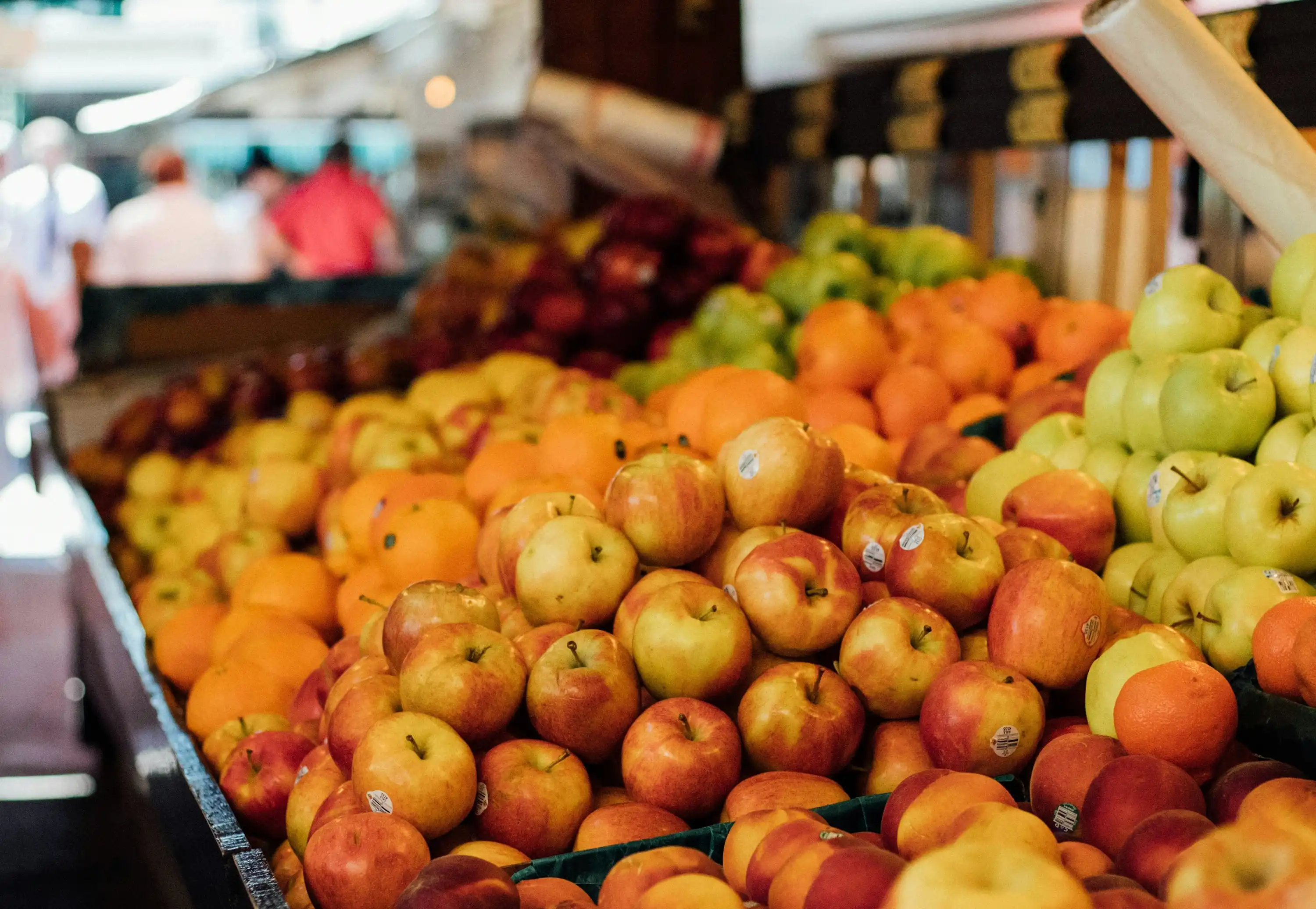
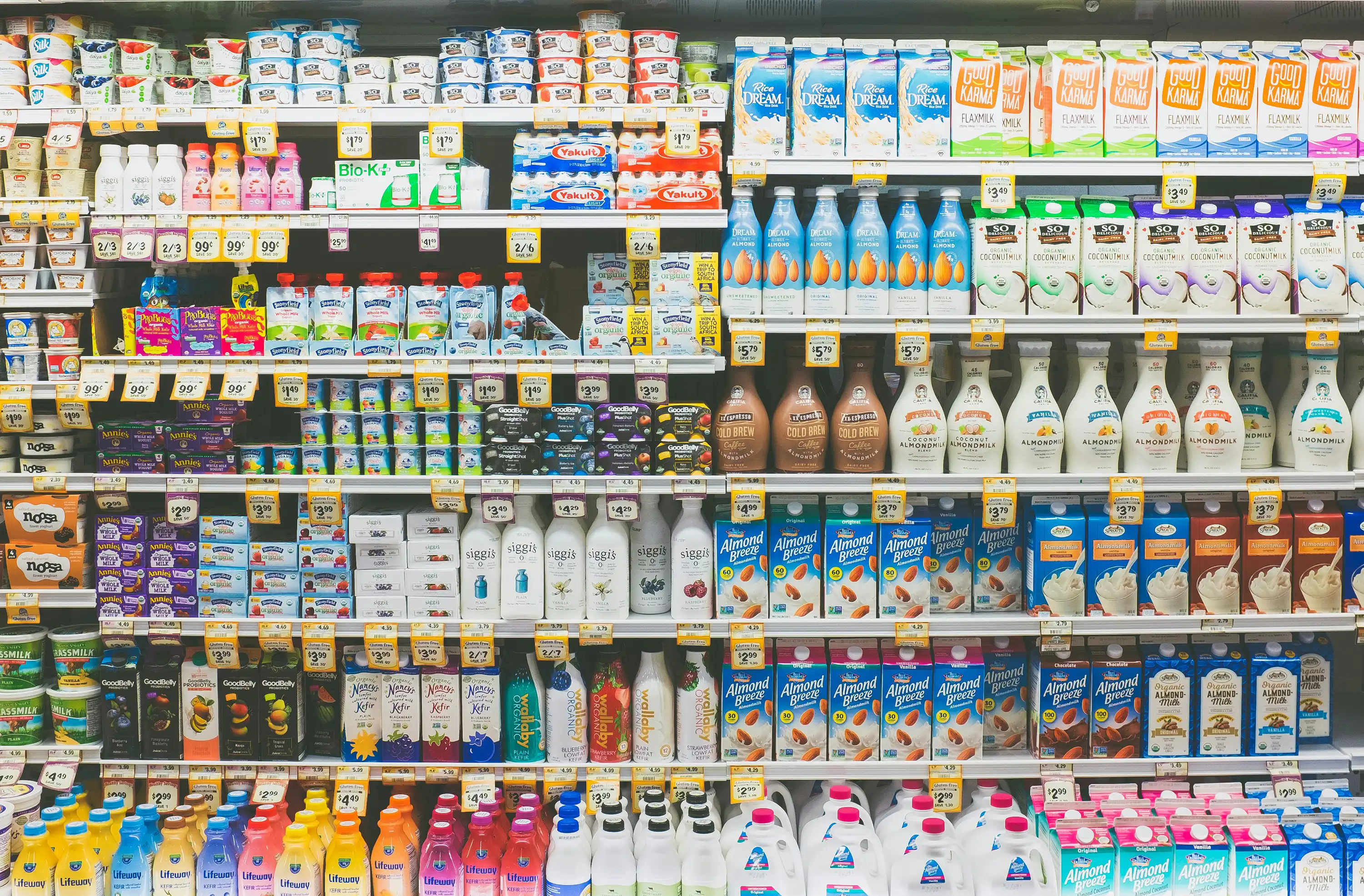
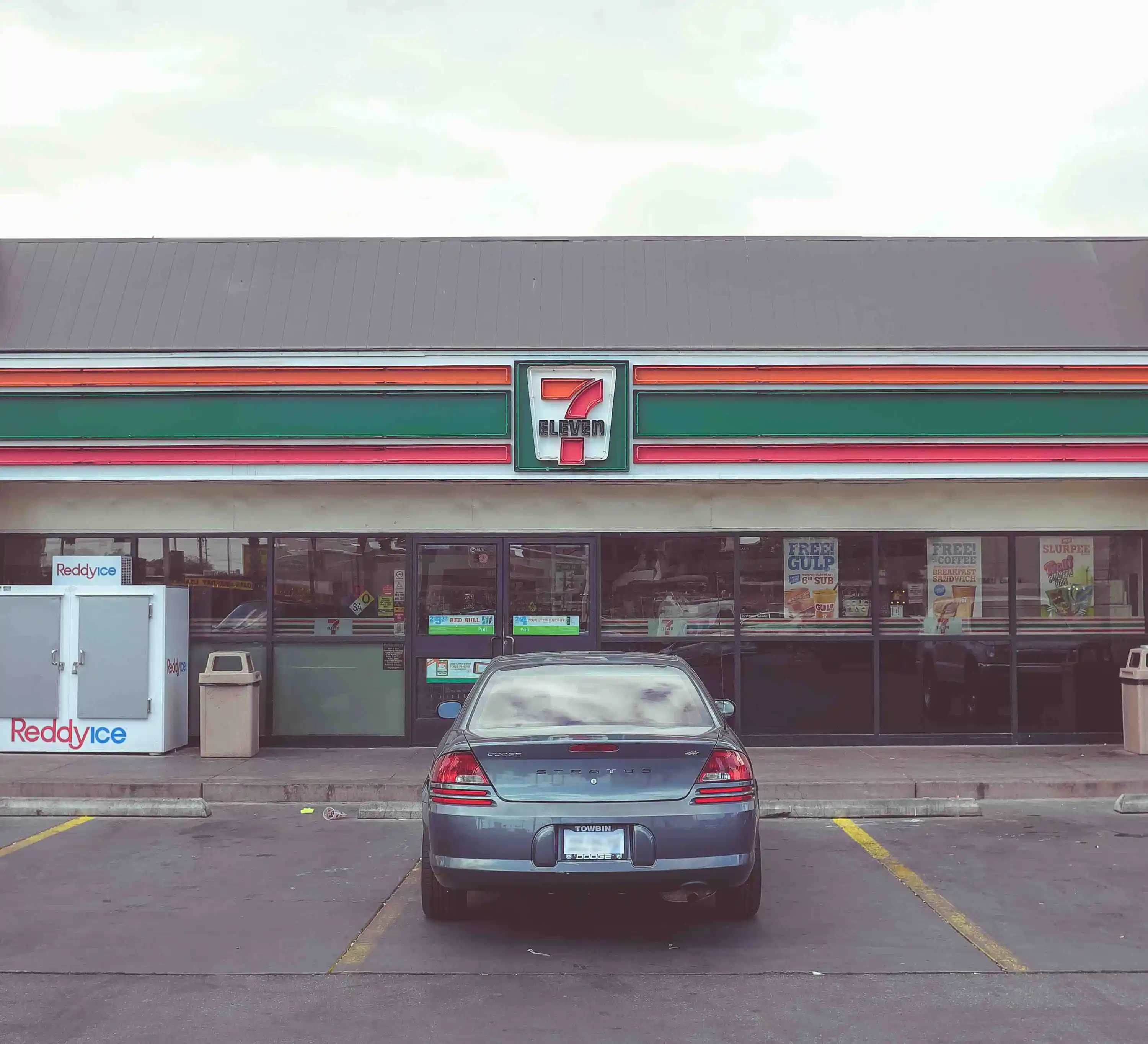
Do you live in an area with a lot of large grocery stores? Or are convenience stores more common? Click on a ZIP code on this map to find out which types of stores are close to you.































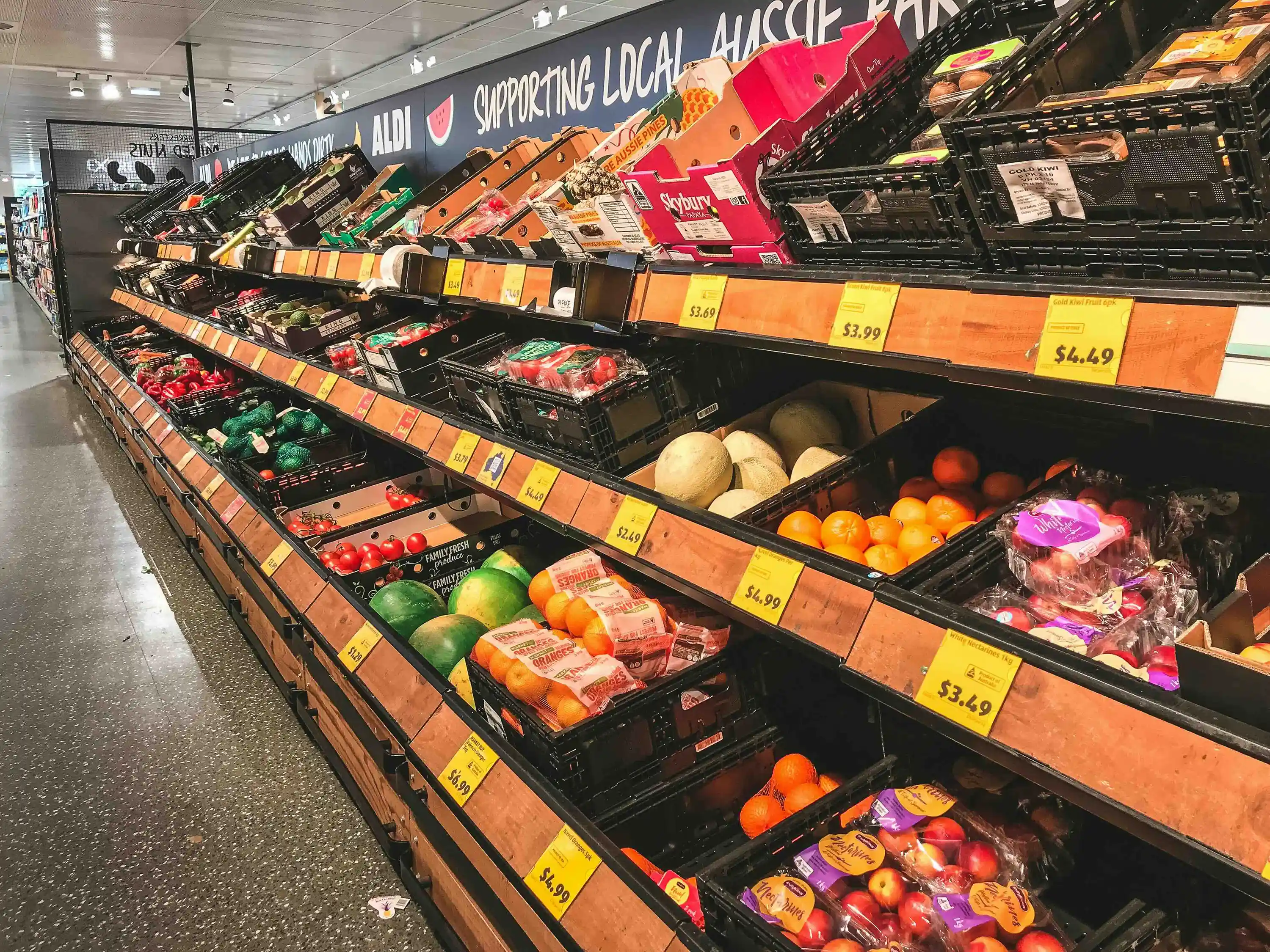
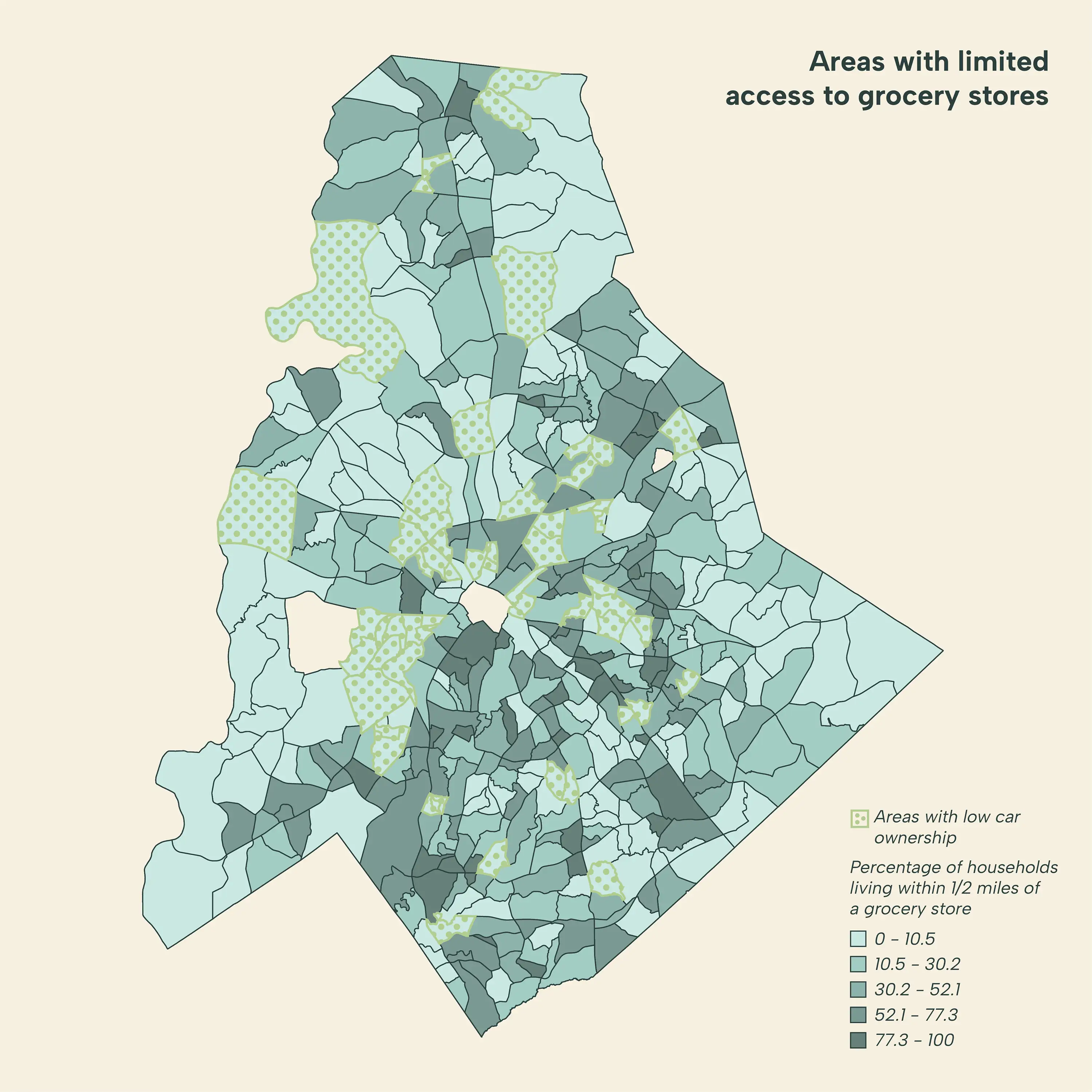
Most people rely on cars to get their groceries.
A few miles driving more might not seem like a big deal if you have a car. Yet, almost 25,000 households don't have a car and rely on other means to reach food. Where are these households located?
To answer this question, the Food Access Research Atlas can help. We overlaid the neighborhoods classified by the USDA as “low car access” with data from the Charlotte Quality of Life Explorer on grocery store access. You’ll see that all areas with low car ownership are also in census tracts in which over 90% of households live further than 1/2 mile away from a grocery store.
How else to reach the next food store? Biking and public transportation are not always good alternatives- especially in suburban areas where streets are not bicycle friendly. Also public transportation is lacking, forcing car-less residents onto long and tedious bus rides.

There are 26 farmers markets in Mecklenburg County. Some feature products from nearly a hundred vendors, while others are fairly small, with fewer than ten vendors. Most of these vendors sell fresh produce or meat.












There are hundreds of small and medium-sized farms in the Charlotte Metro Area and beyond. Many producers directly sell their fruits, vegetables, meats, eggs or cheese at one or several of the farmers markets in Mecklenburg County. By mapping the vendors that sell their products at local farmers markets, we can visualize an alternative food supply chain that links urban and rural areas.
Explore the farmers and producers selling their products at 14 of Mecklenburg County’s 26 farmers markets. For these 14 markets, vendor lists were available, enabling us to map the location of vendors in the region.
Select a farmer market to view its producers on the map
Mecklenburg County has a robust ecosystem of public and private initiatives addressing food insecurity, hunger, and poor nutrition. This ecosystem is composed of numerous charitable organizations, educational institutions, public authorities, healthcare providers, and community partners, each working on solutions from different perspectives. Many stakeholders are well-connected and collaborate with one another to address nutritional and food security issues.
For example, universities provide research and nutritional education materials that can be utilized by schools and community partners. Additionally, food pantries rely on a complex network of donations and a strong referral system to reach communities in need. The map on the right is an initial attempt to visualize the key players that make Mecklenburg County’s food safety net function.
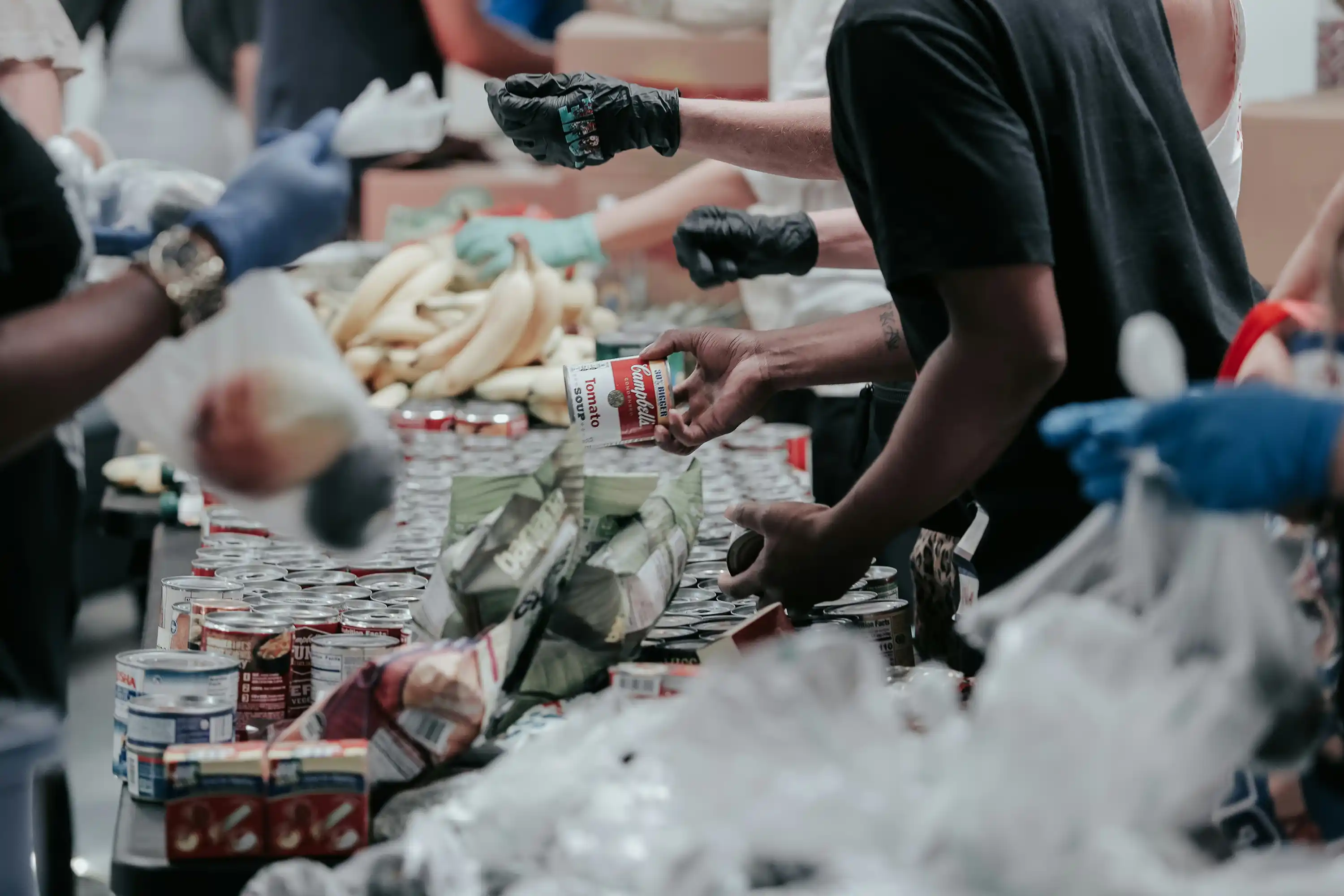

We have mapped over fifty food pantries, food pharmacies, and pick-up locations for pre-boxed food items. They are run by churches, schools, universities and charities.
Together, every organization makes up a piece of the puzzle, needed to get food to people who need it. One of the coordinating organizations in this system is Nourish Up - a collector and redistributor of donated food to thousands of residents.
While Nourish Up is only one puzzle piece in Mecklenburg County’s food safety net, taking a deeper look into the clients of Nourish Up can help us understand the food security challenge of the area.
Scroll down for the case study



Where do most clients of food pantries live? We can use Nourish Up's 2022 data to get better insights into the distribution of people in need of food support.
In 2022, over 106,000 residents received food from food pantries through Nourish Up. Nearly half of all visits to food pantries were made by children under the age of 18 or elderly people over 65.
A relatively high number of visits are made in the west and north of Mecklenburg County. Explore the map on the right to learn more about the demographic makeup of food pantry visitors.
"Hunger does not have one face. Hunger can affect everyone. We see students, young families, and immigrants. But also people with jobs, sometimes with several jobs."
Jacqueline Sinicrope
Select an age category to see its distribution on the map
Not all convenience stores lack access to fresh fruits and vegetables. The County of Mecklenburg is working on several initiatives to increase healthy food in corner stores. For example the Refrigerator Program supports corner stores to set up fridges for fresh food in food insecure neighborhoods. Also the N.C. Healthy Food Retail Designation supports small stores to get a specific sign if they offer a minimum of healthy food options.
So far, there are 8 stores participating in the Refrigerator Program and 13 stores have gained the N.C. Healthy Food Retail Designation.
While these stores are mainly located in areas with low car access & low grocery store access, they are can barely compete with the other corner stores in Mecklenburg.


Mecklenburg's food safety nets are complex networks of donations, distributors and operators of food pantries and donation locations. But there are also those people who refer clients and those that drive online orders to homes.
